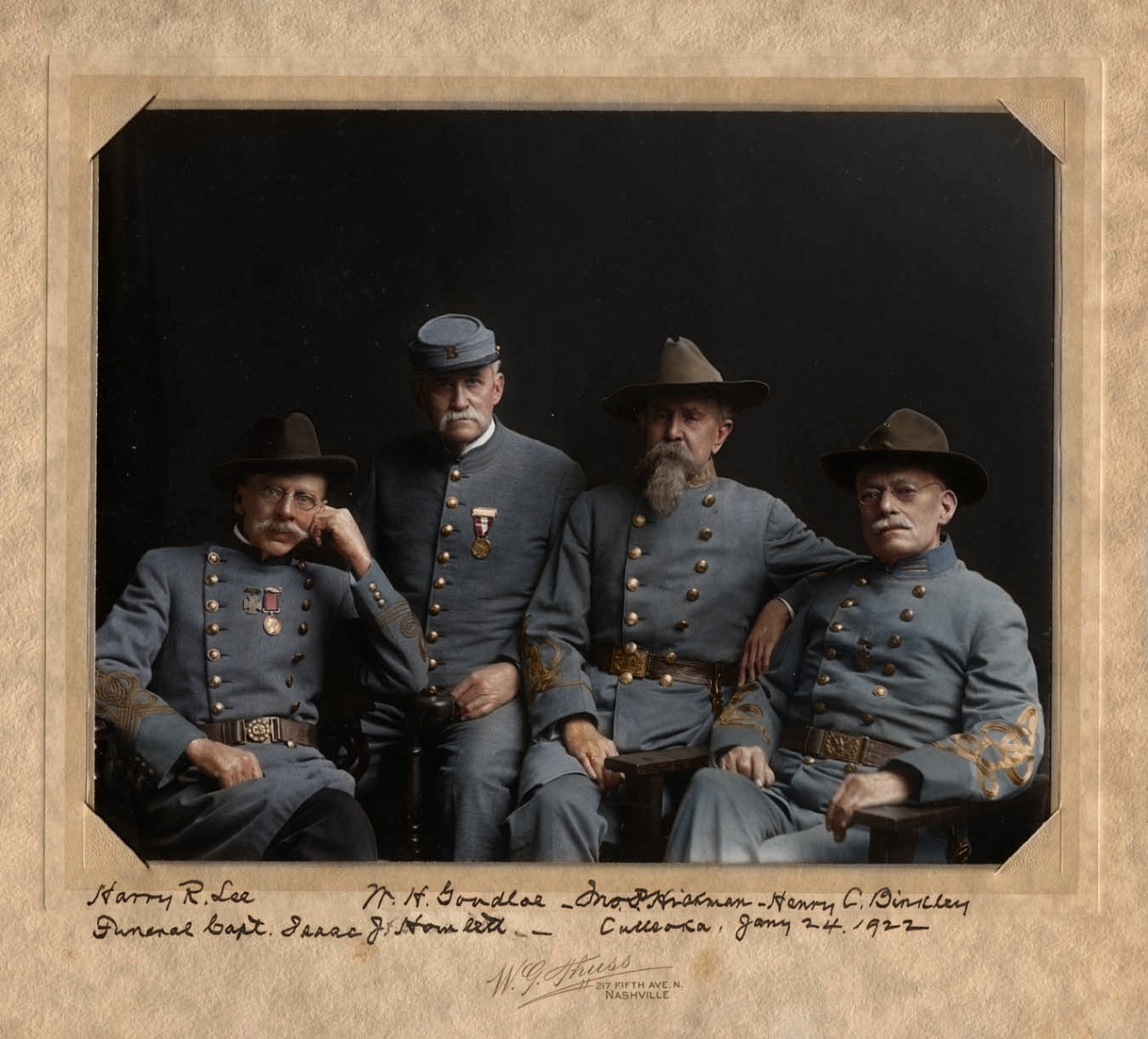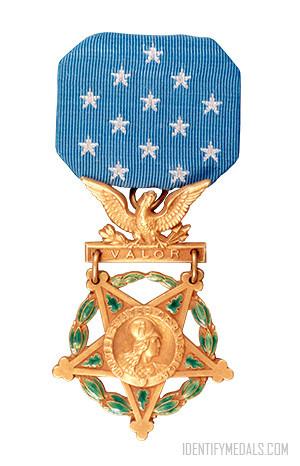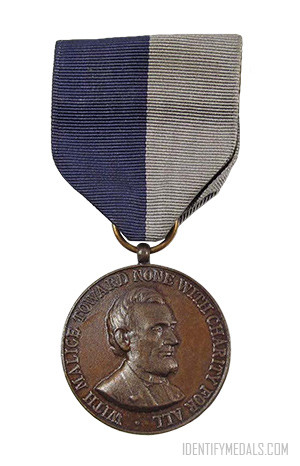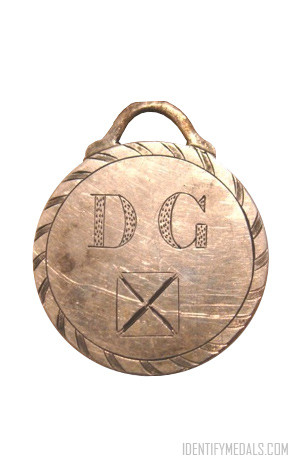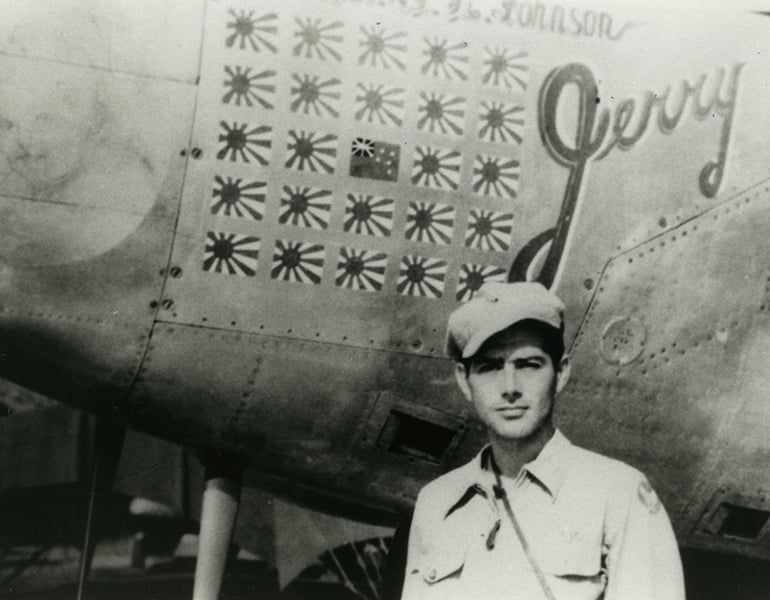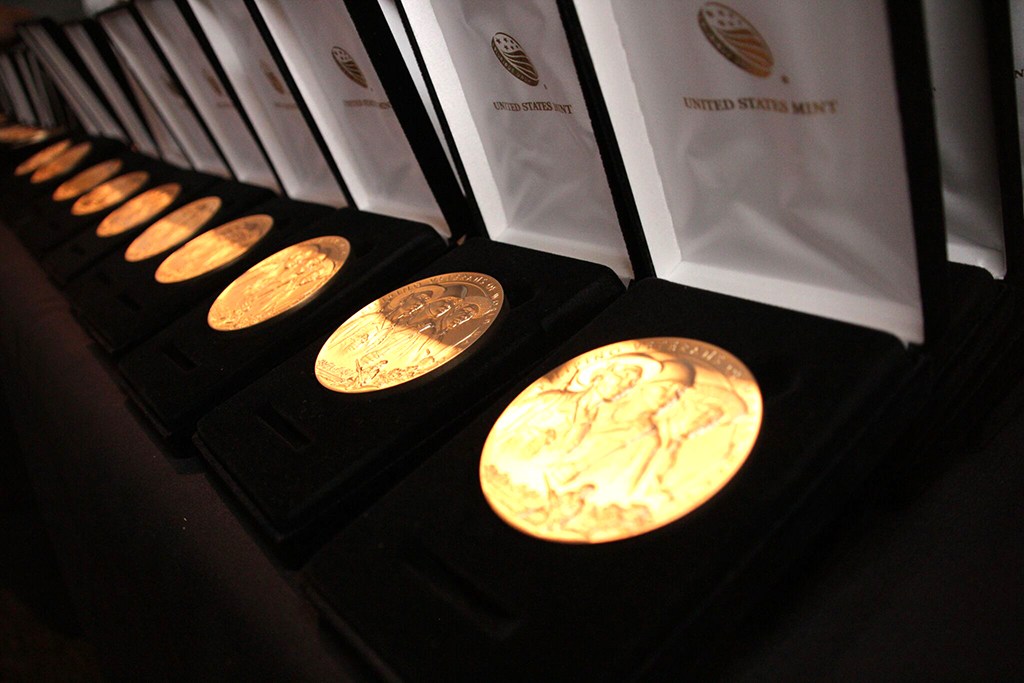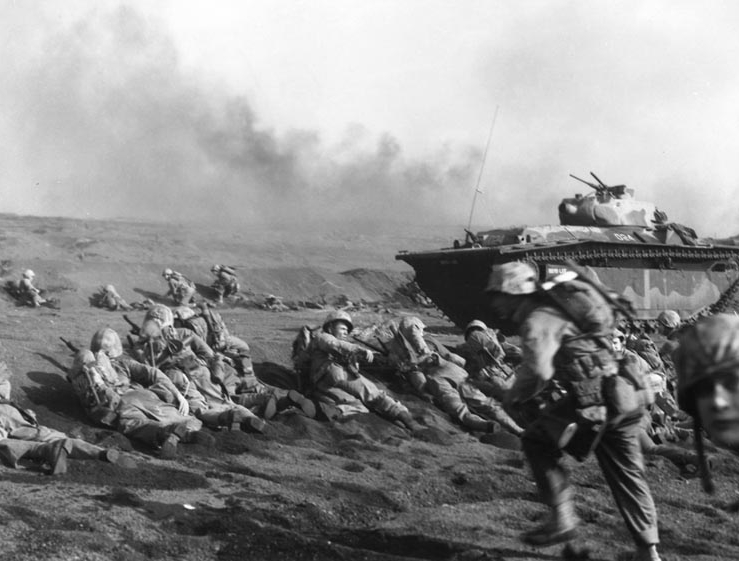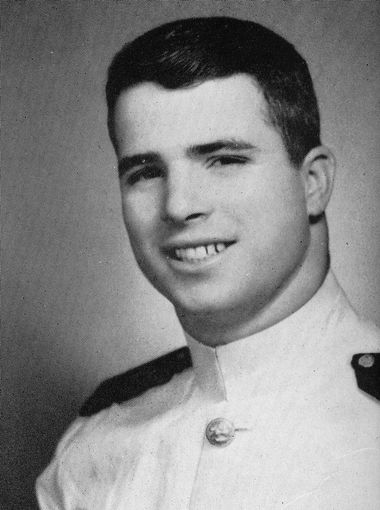Even if you don’t know much about military medals, you probably know a thing or two about some of the medals awarded during World War I or World War II. But unless you’re a Civil War history buff, you may have no clue about the medals, decorations, and orders received during the American Civil War of 1861-1865.
It turns out that it doesn’t take many medals to have a complete U.S. Civil War collection unlike other military medal collections such as Third Reich medals or USSR medals. You only need two for an official Civil War medal collection!
Civil War Medals: The Medal of Honor
There was only one federally sponsored and issued medal during the Civil War, and that was the Medal of Honor, which was actually created during the Civil War. Signed into law by President Abraham Lincoln, a Navy Medal of Honor was first authorized on December 21, 1861 followed by an Army Medal of Honor, which was authorized on July 14, 1862.
Now the Medal of Honor is the highest military decoration that any member of the U.S. Armed Forces can receive, but it was the only decoration in the Civil War, and only enlisted personnel were eligible. Today the criteria to receive a Medal of Honor are very high, but it was different during the Civil War.
As an example, Secretary of War Edwin M. Stanton promised a Medal of Honor to any man who extended his enlistment in the 27th Maine Volunteer Regiment, and because there was no official list of names who did and didn’t, the War Department issued 864 Medals of Honor, one for every man in the unit. These 864 medals were later reviewed and revoked in 1916 by a military board.
Over 40 percent of the Medals of Honor awarded to date—1,522 out of 3,464 medals—were bestowed during the Civil War. In fact, some Civil War Medals of Honor years after the end of the war, including Andrew Jackson Smith whose medal was awarded in 2001 and Alonzo Cushing in 2014.
While we can’t begin to list everyone, some famous recipients include Private Jacob Parrot of Andrews’ Raid, William Harvey Carney, Dr. Mary Walker, and Thomas Ward Custer.
The first Medals of Honor were given to participants of Andrews’ Raid or the Great Locomotive Chase with Private Jacob Parrot as the first person ever to be awarded the Medal of Honor.
During Andrews’ Raid named after James J. Andrews, 22 Union volunteers snuck behind enemy lines to Atlanta to steal a train to ride up north to Chattanooga. They also tried to burn bridges, destroy railroad tracks, and cut telegraph lines. The idea was to cut off Chattanooga, which was under control of the Confederates, from reinforcements just as the Union Army was attacking the city. Unfortunately, the raid failed, and some of the raiders were captured and executed. Even so, the raiders were regarded as heroes, and all but two of the military members received Medals of Honor, some posthumously.
At least 32 Medals of Honor were awarded to African-Americans, and William Harvey Carney was the first. Born a slave in Virginia, he finally found freedom in Massachusetts. He volunteered to join the 54th Massachusetts Infantry Regiment, the first African-American unit in the northern states although it was led by white officers.
Tasked with taking Fort Wagner, a beachhead fortification that protected the southern Charleston Harbor, the 54th was chosen for the second attack. The Union flag bearer was killed as the soldiers stormed the fort, but Carney stepped in and held the flag for the remainder of the battle, never losing possession of the flag despite several injuries. Unfortunately, the 54th was forced to retreat, but, as Carney said after the battle, “the old flag never touched the ground.” Carney was awarded the Medal of Honor in 1900, thirty-five years after the end of the Civil War.
Individuals who have received two Medals of Honor are rare, and Thomas Ward Custer is a part of this elite group, receiving both medals for actions during the Civil War. His first medal was awarded for actions during the Battle of Namozine Church where he led a cavalry charge while under fire, seized a Confederate flag, and took 14 Confederates prisoner. Custer’s second medal was awarded for actions three days later at the Battle of Sailor’s Creek where he again took a Confederate flag during a cavalry charge. Singlehandedly breaking a Confederate line, Custer charged at the Confederate flag-bearer, received a shot to the face before quickly recovering to kill the flag-bearer, and finally presented the flag to his brother, George Armstrong Custer.
Thomas Custer, George Custer, and one other brother would die at the Battle of Little Bighorn in 1876.
Civil War Medals: The Civil War Campaign Medal
The other state-issued medal was the Civil War Campaign Medal, authorized by the War Department in 1907 for both Union and Confederate veterans who had served between April 15, 1861 and April 9, 1865 or service in Texas through August 20, 1866.
Referred to as a “badge” at the time, the Civil War Campaign Medal was first issued in 1909 (the medal was originally established as a badge because Congress would not approve a medal due to the costs involved.) The blue and gray ribbon denotes the respective uniform colors of the U.S. and Confederate troops.
The medal was designed by Francis D. Millet, a noted sculptor who perished on the RMS Titanic in 1912. The monies necessary to mint and issue the medal were not appropriated by Congress until 1956 – 91 years after the war ended. The medal was then struck at the Philadelphia Mint. Its obverse displayed an engraved image of Abraham Lincoln while the Navy and Marine Corps versions depicted the USS Monitor and CSS Virginia‘s battle at Hampton Roads. The reverse has the words “The Civil War 1861-1865” encircled by a wreath.
Civil War Medals: The Davis Guard Medal
In addition, the Confederacy awarded one medal during the Civil War known as the Davis Guard Medal. Extremely rare, the medal was given to the Davis Guards, a militia company organized in Houston, Texas, for their actions at the Battle of Sabine Pass on September 1, 1863.
Issued by the residents of Sabine Pass although sanctioned by the Confederacy, the medal was issued in gratitude for the Confederate men who held back a Union force numbering in the thousands. It was presented as a one-time award to exactly 50 men (in addition to the 49 members of the battery, the award was also presented to Jefferson Davis as the unit’s honorary commander)
The medal consisted of a silver Mexican coin polished smooth with the letters “DG” on the front above a cross pattee. The reverse bore the inscription “Sabine Pass Sept. 23, 1864” in cursive script.
Civil War Medals: Other Medals
Even though you may have seen photos of Civil War soldiers or veterans with medals, most of these are medals from local military units or veteran medals of common organizations. As one example, many states awarded “first call” or “first defender” medals to individuals who voluntarily enlisted after President Lincoln’s first call to arms in April 1861.
Ohio was one of the first—if not the first—to issue state awards. Patterned after the British Crimean War Medal of 1854, 20,000 medals were produced immediately at the end of the war. The reverse of each medal is hand engraved to the recipient with his unit.
In addition, you should know that many of the awards given during the Civil War had some connection to capturing or saving regimental flags, which were the rallying point for the unit and guided its movements. Losing a flag could sometimes even disrupt a unit more than the death of the commanding officer.
In the end, you might want to consider starting a U.S. Civil War medal collection, as you’ll easily be able to say that you have all the official medals after just acquiring two! However, you might also enjoy trying to see how many different medals you could find from local units and veterans’ organizations. In that case, you’ll have to do a little bit more work!
Sources
- https://www.businessinsider.com/medal-of-honor-winners-incredible-stories-military-2018-3
- https://www.militarytrader.com/military-trader/civil-war-medals
Guest Contributor: Rachel Basinger is a former history teacher turned freelance writer and editor. She loves studying military history, especially the World Wars, and of course military medals. She has authored three history books for young adults and transcribed interviews of World War II veterans. In her free time, Rachel is a voracious reader and is a runner who completed her first half marathon in May 2019.

